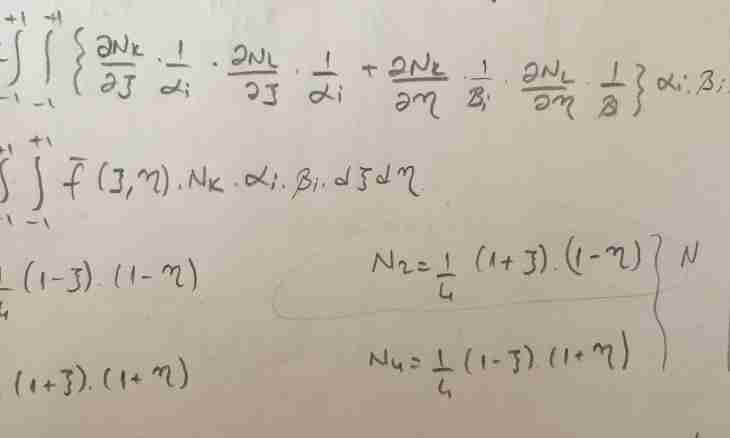The integral calculus is a part of the mathematical analysis which basic concepts – primitive function and integral, its properties and methods of calculation. Geometrical point of these calculations – finding of the area of the curvilinear trapezoid limited to integration limits.
Instruction
1. As a rule, calculation of integral comes down to leading subintegral expression to a tabular style. There is a set of tabular integrals which facilitates the solution of such tasks.
2. There are several ways to lead integral to a convenient look: direct integration, integration in parts, a substitution method, introduction under the sign of differential, Weierstrass's substitution, etc.
3. The method of direct integration is a consecutive reduction of integral to a tabular style by means of elementary transformations: cos² (x / 2) dx = 1/2 • ∫ (1 + cos x) dx = 1/2·dkh + 1/2·sos xdkh = 1/2 • (x + sin x) + With, where C – a constant.
4. The integral has a set of possible values proceeding from property of an antiderivative, namely existence of a summable constant. Thus, the solution found in an example is the general. The private solution of integral is called the general at a certain value of a constant, for example, of C=0.
5. Integration is in parts applied when subintegral expression represents performing algebraic and transcendental functions. Method formula: ∫udv = u · v-∫vdu.
6. As positions of multipliers in works do not matter, as function u it is better to choose that part of expression which after differentiation becomes simpler. Example: ∫x · ln xdx = [u=ln x; v=x; dv=xdx] = x²/2·ln x – ∫x²/2·dx/x = x²/2·ln x – x²/4 + C.
7. Introduction of a new variable is a reception of a method of substitution. At the same time changes both itself subintegral functions, and her argument: ∫x · √ (x - 2) dx = [t=x-2 → x = t²+2 → dx=2 · tdt] = ∫ (t² + 2) · t·2 · tdt = ∫ (2·t^4 + 4·t²) dt = 2·t^5/5 + 4·t³/3 + C = [x=t²+2] = 2/5 · (x - 2) ^ (5/2) + 4/3 · (x - 2) ^ (3/2) + C.
8. The introduction method under the sign of differential assumes transition to new function. Let ∫f(x) = F(x) + C and u = g(x), then ∫f(u)du = F(u) + C [g’ (x) = dg(x)]. Example: ∫ (2 · x + 3)²dx = [dx = 1/2·d (2·x + 3)] = 1/2 · ∫ (2·x + 3)²d (2·x + 3) = 1/6 · (2 · x + 3)³ + C.

